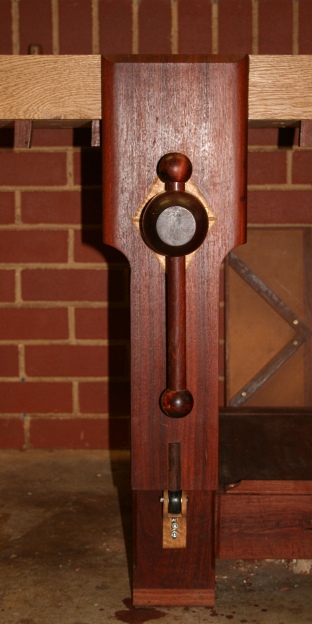I'm in the process of building what I'm calling my tiny workbench. It's only 48" long by 18" wide. But it's a stout laddie! I found some rough sawn oak boards at my favorite lumber yard and MAN are they heavy! Don't know why and don't care. The weight will be a huge asset to this tiny workbench. But to the point-
I have decided to put not one, but two vises on this bench. The first will be the large Veritas Front Vise -- http://www.leevalley.com/us/Wood/pag...9,41661&ap=1-- (Which I'll attach to the end. HA!) and the second will be a homemade leg vise on the opposite end (but the front!) using this screw-- https://www.amazon.com/dp/B01M2109GD...Q0XU3LSD&psc=0
But still, I digress. My question is, why do all the leg vises I see taper from the top to the bottom? Is it because they are tapering down to the width of the leg they are attached to?
I'm thinking of making that leg wider than the others and not tapering the moving face of the vise which would provide more clamping area all the way down. Seems logical to me, but even without a wider leg to work from, I'm scratching my head over why anyone would taper the bottom of the front piece of a leg vise except for style.
Just curious re any leg visers thoughts.




 Reply With Quote
Reply With Quote







